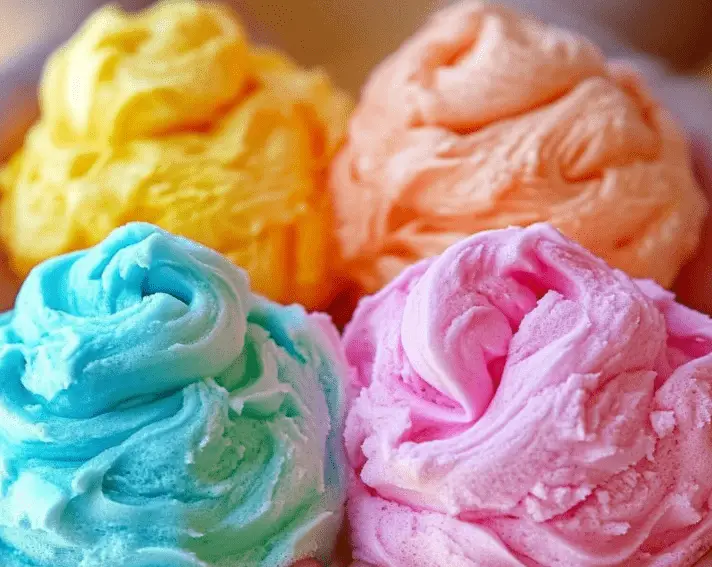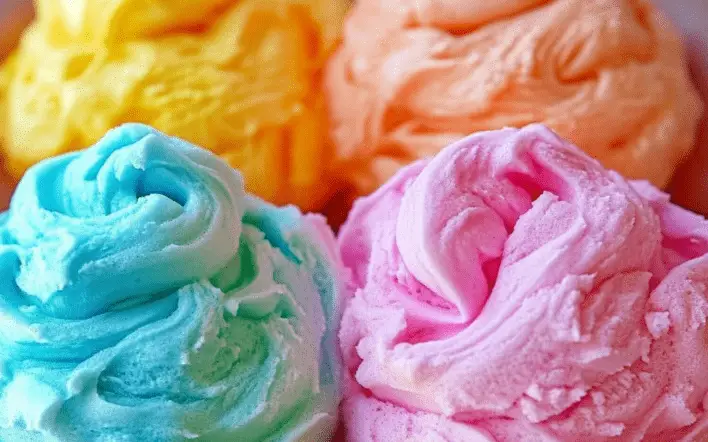Rainbow Sensory Foam Dough: A Colorful DIY Craft That Sparks Joy and Creativity
Looking for a hands-on, colorful, and creative activity that’s easy to make and fun for all ages? Rainbow Sensory Foam Dough is the perfect DIY project to stimulate your child’s senses and imagination. Soft, squishy, and vibrantly colored, this foam dough recipe uses just a few household ingredients and offers endless opportunities for sensory exploration.
Whether you’re crafting on a rainy afternoon, preparing for a playdate, or planning a classroom activity, this engaging project provides both educational and entertainment value. In this guide, you’ll discover the ingredients, step-by-step instructions, craft benefits, tips, storage suggestions, and answers to frequently asked questions.
Table of Contents
Ingredients
To make this sensory-rich rainbow foam dough, gather the following:
- 3 cups cornstarch
- 1 1/2 cups unscented shaving cream
- Food coloring (gel or liquid in red, orange, yellow, green, blue, purple)
- Optional: a few drops of essential oil (lavender, lemon, or mint)
These ingredients are safe for touch-based play and easy to find in any supermarket or pharmacy.
Instructions
- Prep your stations: Start by lining up 6 small bowls. Place 1/2 cup of cornstarch into each bowl.
- Add color & foam: Add a few drops of food coloring to each bowl—one color per bowl. Then, gently fold in about 1/4 cup of shaving cream. Stir until a soft dough begins to form.
- Mix & knead: Use your hands to knead each color for 1–2 minutes. If the dough feels too sticky, add a bit more cornstarch. If it’s dry, add a bit more shaving cream.
- Play & create: Invite kids to play freely. They can squish, stretch, combine, and create rainbows, swirls, or marbled dough effects.
This process is as much fun to make as it is to play with.
Benefits of This Craft
Crafting Rainbow Sensory Foam Dough isn’t just fun—it also provides developmental and therapeutic benefits:
- Supports sensory development: The combination of textures (smooth, soft, pliable) helps children explore their sense of touch.
- Boosts fine motor skills: Kneading, rolling, and forming the dough strengthens little hands and fingers.
- Encourages creativity: Kids can mold animals, food shapes, or rainbow spirals—there are no limits.
- Introduces color theory: Children learn about primary and secondary colors by mixing the dough.
- Promotes emotional regulation: Sensory play can have a calming, grounding effect that helps reduce stress or anxiety in young children.
It’s an ideal activity for toddlers, preschoolers, and even older children who enjoy hands-on crafts.
Tips
Here are some useful tips to ensure the activity goes smoothly and stays mess-free:
- Cover your workspace with a tray, baking sheet, or plastic tablecloth to catch excess cornstarch or coloring.
- Use gloves or a spoon when first mixing in food coloring to avoid stained hands.
- Choose gel food coloring for brighter, more vibrant dough compared to liquid versions.
- Add essential oils if desired. Lavender promotes relaxation, lemon adds freshness, and mint gives a cooling sensation.
- Let children help with the process—it gives them ownership over their creations and extends the fun.
Keep a roll of paper towels nearby, especially if kids get carried away with color mixing.
What Does It Taste and Look Like?
While Rainbow Sensory Foam Dough is not edible, it certainly looks good enough to eat. The finished dough has a fluffy and squishy texture similar to marshmallow fluff or soft whipped cream. It’s light, moldable, and fun to press, pull, or roll.
Visually, the dough is colorful and eye-catching. Each color stands out brightly on its own, and when mixed together, they form mesmerizing swirls or marbled effects that kids find endlessly fascinating.
It smells pleasant if you add essential oils, and the overall feel is dry to the touch, unlike sticky slime or wet doughs.
How to Store
Although this dough is best when fresh, it can be stored for short-term use with proper care:
- Place each color in an airtight container or ziplock bag after use.
- Label and separate the colors to avoid unwanted mixing.
- Store in a cool, dry place, away from heat or direct sunlight.
- Refresh as needed: If the dough starts to dry, knead in a touch of shaving cream. If it becomes sticky, add a pinch of cornstarch.
Note that since it contains shaving cream, the dough is not meant for long-term storage. It may start to lose texture and softness after a couple of days, depending on humidity and storage conditions.

Making Rainbow Sensory Foam Dough is an easy and rewarding way to entertain and educate kids while letting their imaginations run wild. With just a few common ingredients and a splash of color, you can create a tactile wonderland that supports development and creativity.
This craft is perfect for sensory tables, birthday parties, or quiet indoor play. It’s also an excellent DIY activity for educators and caregivers looking to encourage open-ended play.
If you’re looking for more colorful and creative ideas to enjoy with your kids, don’t miss out on More DIY craft ideas to keep your inspiration going.
FAQ
Can I substitute shaving cream with another ingredient?
Yes, you can use foaming body wash or whipped soap, though the texture may vary slightly. Always choose a child-safe, unscented version.
Is it safe for babies or toddlers who mouth everything?
This dough is safe to touch, but not edible. Avoid using with children who might try to eat it. Supervision is recommended at all times.
Can I use natural or homemade food coloring?
Yes, natural coloring from beet juice, turmeric, or spinach can be used, although the shades may be softer than synthetic food dyes.
How long does the dough last before drying out?
It typically lasts up to 3 days if stored properly. However, because it’s foam-based, it’s best used the same day for optimal texture and color.
Can I make this craft mess-free?
You can minimize mess by using washable food coloring, placing a craft mat on the table, and washing hands promptly after play.







